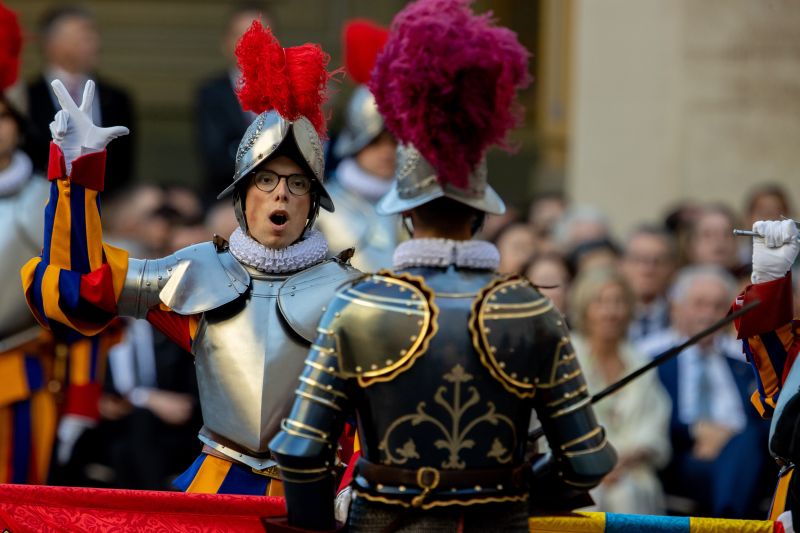 A new Swiss Guard swears to protect the pope, even sacrificing his life if necessary, during a ceremony on May 6, 2023. / Daniel Ibanez/CNA
A new Swiss Guard swears to protect the pope, even sacrificing his life if necessary, during a ceremony on May 6, 2023. / Daniel Ibanez/CNA
Vatican City, May 6, 2023 / 13:00 pm (CNA).
A group of new Swiss Guard recruits officially joined the ranks after swearing to “faithfully, loyally and honorably serve the reigning Pontiff” at the Vatican on Saturday.
Wearing the red, orange, and blue grand gala uniform with armor, 23 new guardsmen swore their allegiance before friends and family during a ceremony in the San Damaso Courtyard on a sunny and breezy May 6.
The ceremony began with the new guards, halberds in hand, marching into the courtyard.
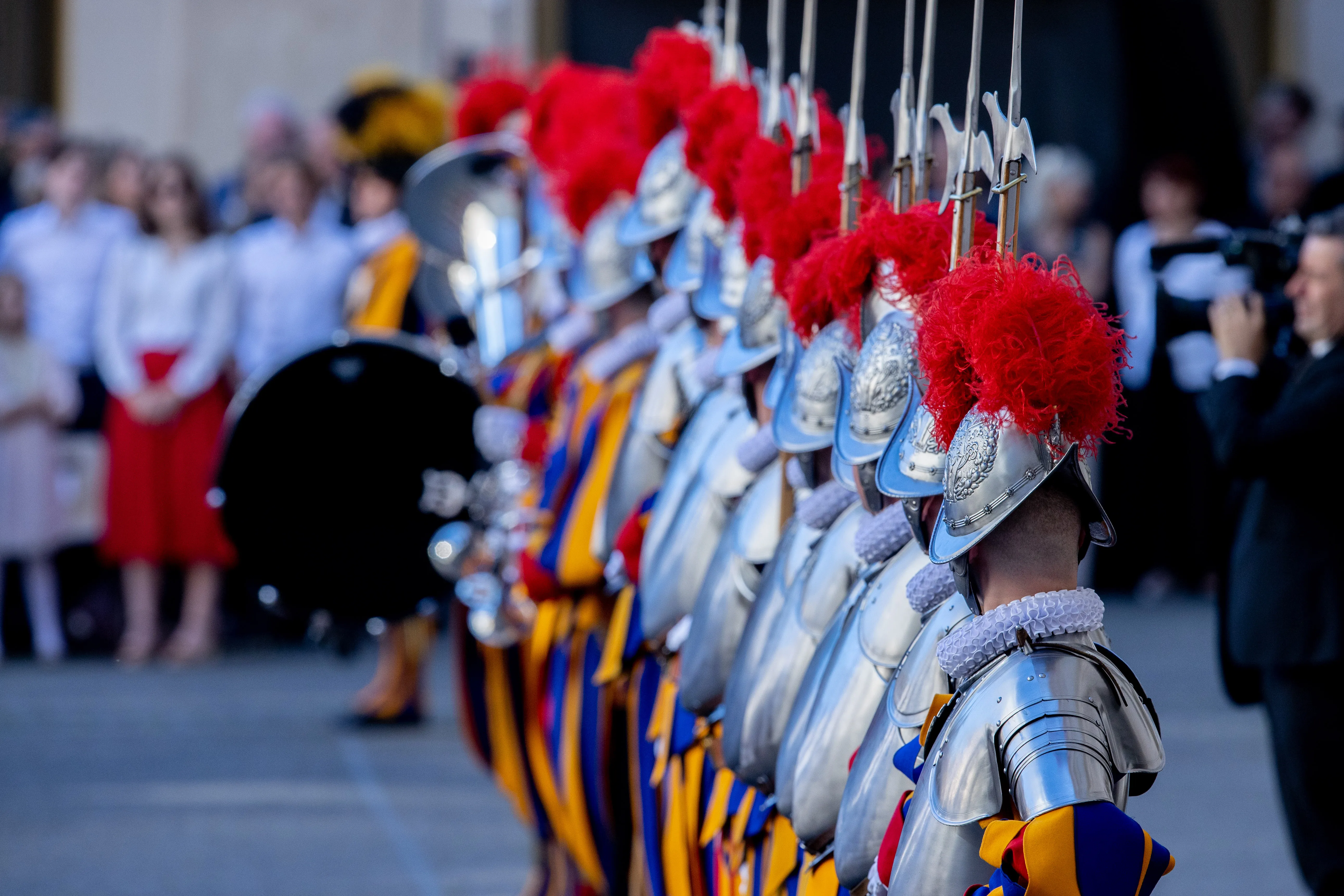
Swiss Guard Commander Christoph Graf reminded the men of the proverb, “the clothes don’t make the man,” recalling that just as beautiful clothing does not say anything about the character of a person, neither does wearing the uniform make them a good guard.
Wear the uniform, he said, “not as a stage dress but as an expression of your service.”
The military’s chaplain also gave a short reflection, reminding the guards to be guided by the Lord, before he pronounced the words of the oath they shortly afterward swore to.
The more than hour-long ceremony was punctuated by music and drumming from the Pontifical Swiss Guard Band, as well as the playing of the national anthems of Vatican City and Switzerland.
The 23 recruits enter carrying their halberds.
New Swiss Guards always have their swearing-in on May 6, the anniversary of the 1527 Sack of Rome. pic.twitter.com/8ODkZZEJv5
— Hannah Brockhaus (@HannahBrockhaus) May 6, 2023
Archbishop Edgar Peña Parra, sostituto of the Secretariat of State, represented Pope Francis at the event.
On Saturday morning, the Swiss Guard celebrated Mass in St. Peter’s Basilica, followed by a meeting with Pope Francis in the Apostolic Palace.
“To you recruits in particular I say: do not lose your courage and passion to discover new things,” the pope told them.
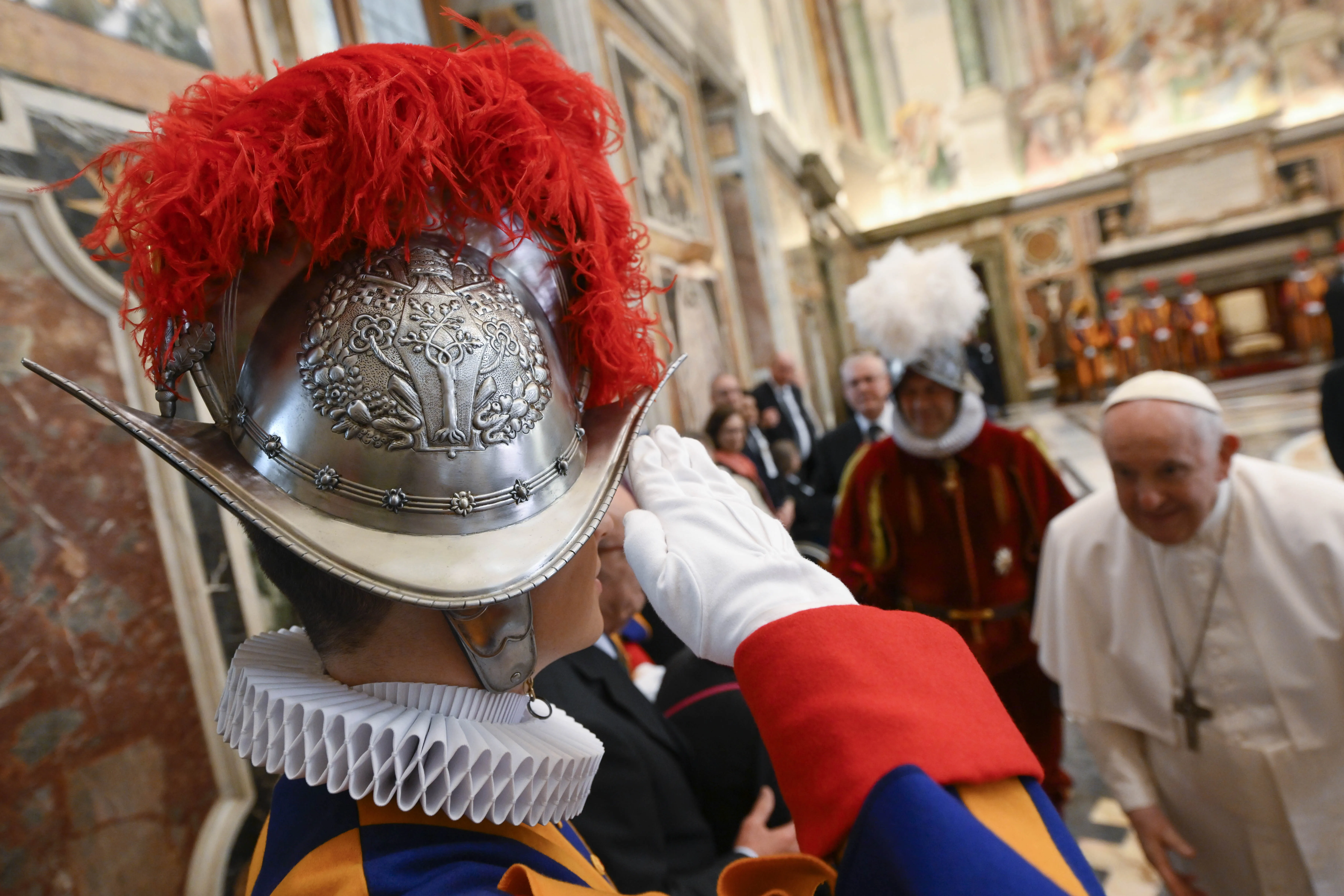
“I like to think that the decision to place some years of your lives at the disposal of the pope and the Holy See is not unrelated to your personal journey of faith,” he said. “Your mission here at the Vatican is an avenue the Lord has opened for you to live out your Baptism and give joyful witness to your faith in Christ.”
Francis told them the faces of those they encounter every day, whether pilgrims or cardinals, are an invitation to “recognize and share God’s love for each one.”
“May every situation, every encounter be an opportunity to put the Gospel of Christ into practice, to learn from the Lord and to live fraternal love in his name and by his Spirit,” he said.
Here are six things to know about the Swiss Guard and their annual swearing-in:
An important anniversary
The swearing-in ceremony takes place each year on the anniversary of the May 6, 1527 battle known as the Sack of Rome, when 147 guards lost their lives defending Pope Clement VII from the army of the mutinous Holy Roman Empire.
During the battle, the pope was able to escape from the Vatican to Castel Sant’Angelo via a secret passageway. It is the most significant and deadly event in the history of the Swiss Guard.
A days-long celebration
The ceremony is just one piece of several days of public and private events, some of which are attended by representatives of the Swiss army, Swiss government, and Swiss bishops’ conference. Family and friends of the guards, and former guards who return for a visit, also participate.
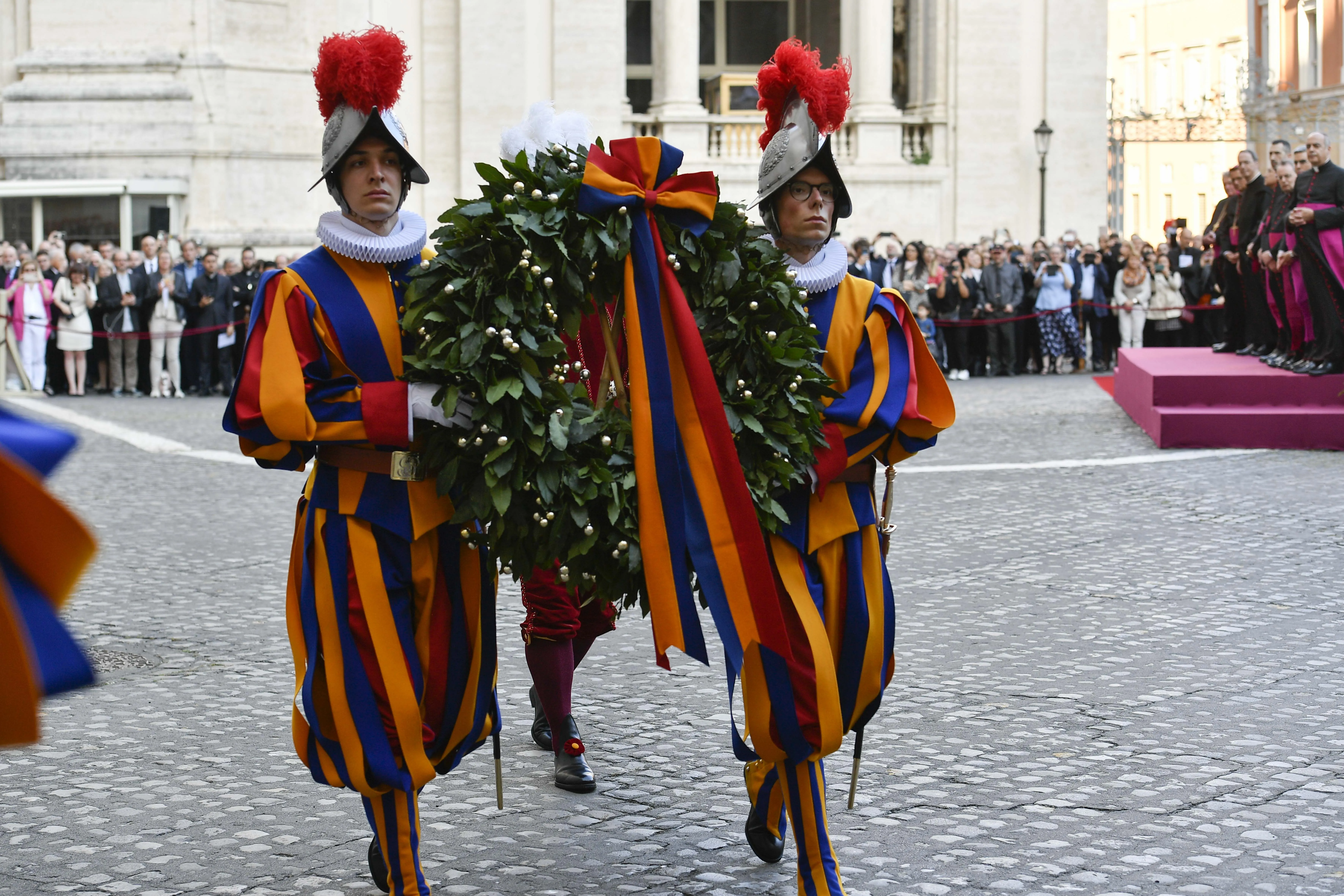
In addition to Mass and a private audience with Pope Francis, the Swiss Guard prayed vespers on the afternoon preceding the swearing-in ceremony.
After vespers, the “deposition of the crown” took place in Roman Protomartyrs Square inside the Vatican. The ceremony involves the placing of a wreath to commemorate the guards who died during the Sack of Rome.
Chaplain
The Swiss Guard has its own Catholic chaplain. In 2021, Pope Francis appointed as chaplain the Swiss Benedictine Father Kolumban Reichlin, 50, who completed part of his studies at Saint Meinrad Seminary in Indiana.
The Pontifical Swiss Guard also has its own oratory inside Vatican City, where members regularly attend Mass, and where ceremonies such as weddings and baptisms sometimes take place.
The Church of Saints Martin and Sebastian of the Swiss was built in 1568 by Pope Pius V to be the Swiss Guard’s private chapel. It is located just behind the colonnade of St. Peter’s Square on the north side, next to the Swiss Guard barracks and the Apostolic Palace.
Oath
During the swearing-in ceremony on May 6, the chaplain, Father Reichlin, read the full oath, which reads in English: “I swear to faithfully, loyally and honorably serve the reigning Pontiff and his legitimate successors, to devote myself to them with all my strength, sacrificing, if necessary, even my life in their defense. I assume the same duties towards the College of Cardinals during the vacancy of the Apostolic See. I also promise the Commander and other Superiors respect, loyalty and obedience. Thus I swear, may God and our Patron Saints assist me.”
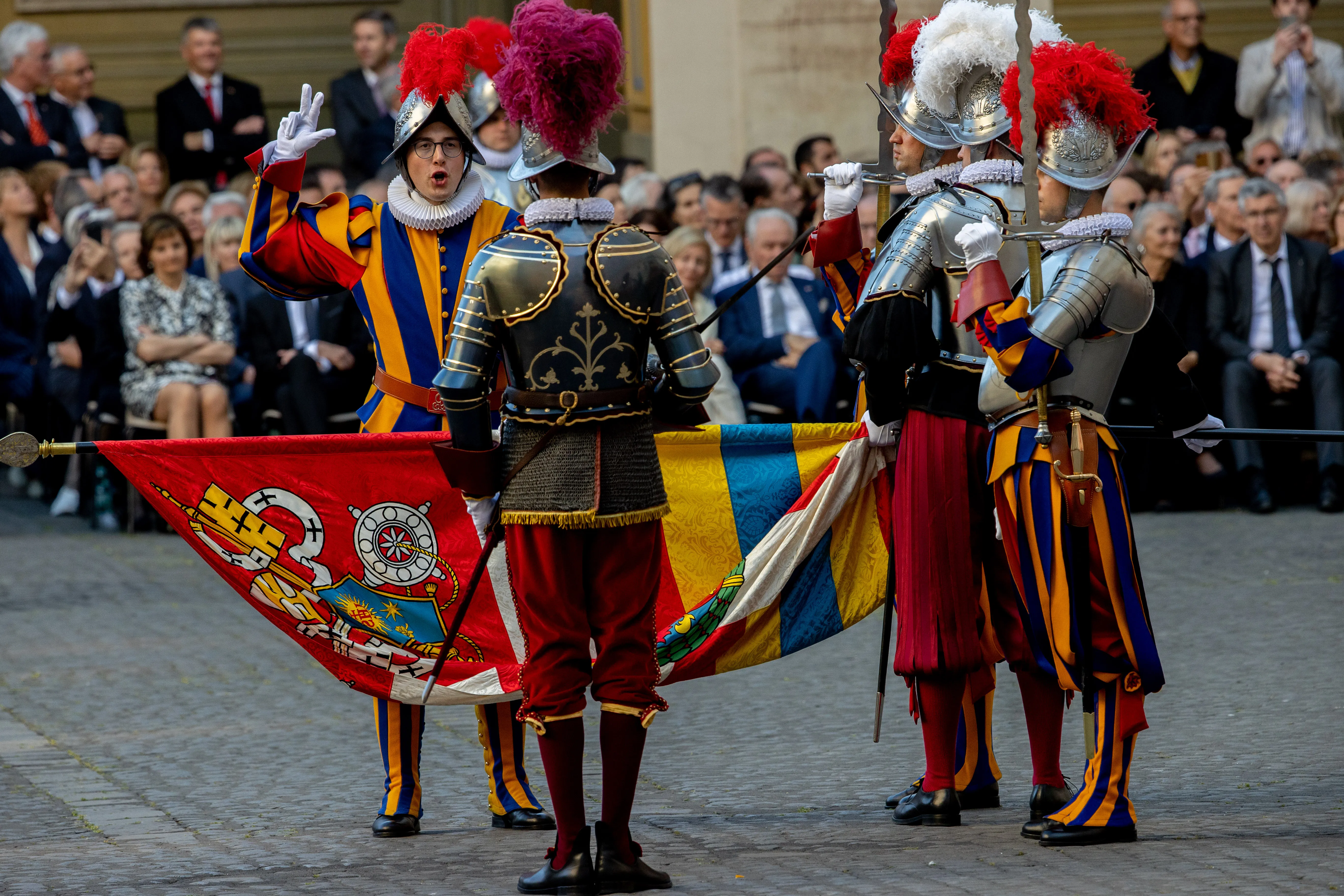
Each new recruit took a turn approaching the flag of the Swiss Guard when his name was called out. He firmly grasped the banner with his left hand, while raising his right hand and opening three fingers as a sign of his faith in the Holy Trinity.
He then proclaimed in a loud voice, “I, Halberdier [name] swear to observe faithfully, loyally and honorably all that at this moment was read to me. May God and our Patron Saints assist me!”
The new guards made the oath in one of the four official languages of Switzerland: German, French, Italian, or Romansh, a language mostly spoken in the Swiss canton of Grisons which descended from vulgar Latin.
On Saturday, two of the new guardsmen made their oath in Romansh.
Patron saint
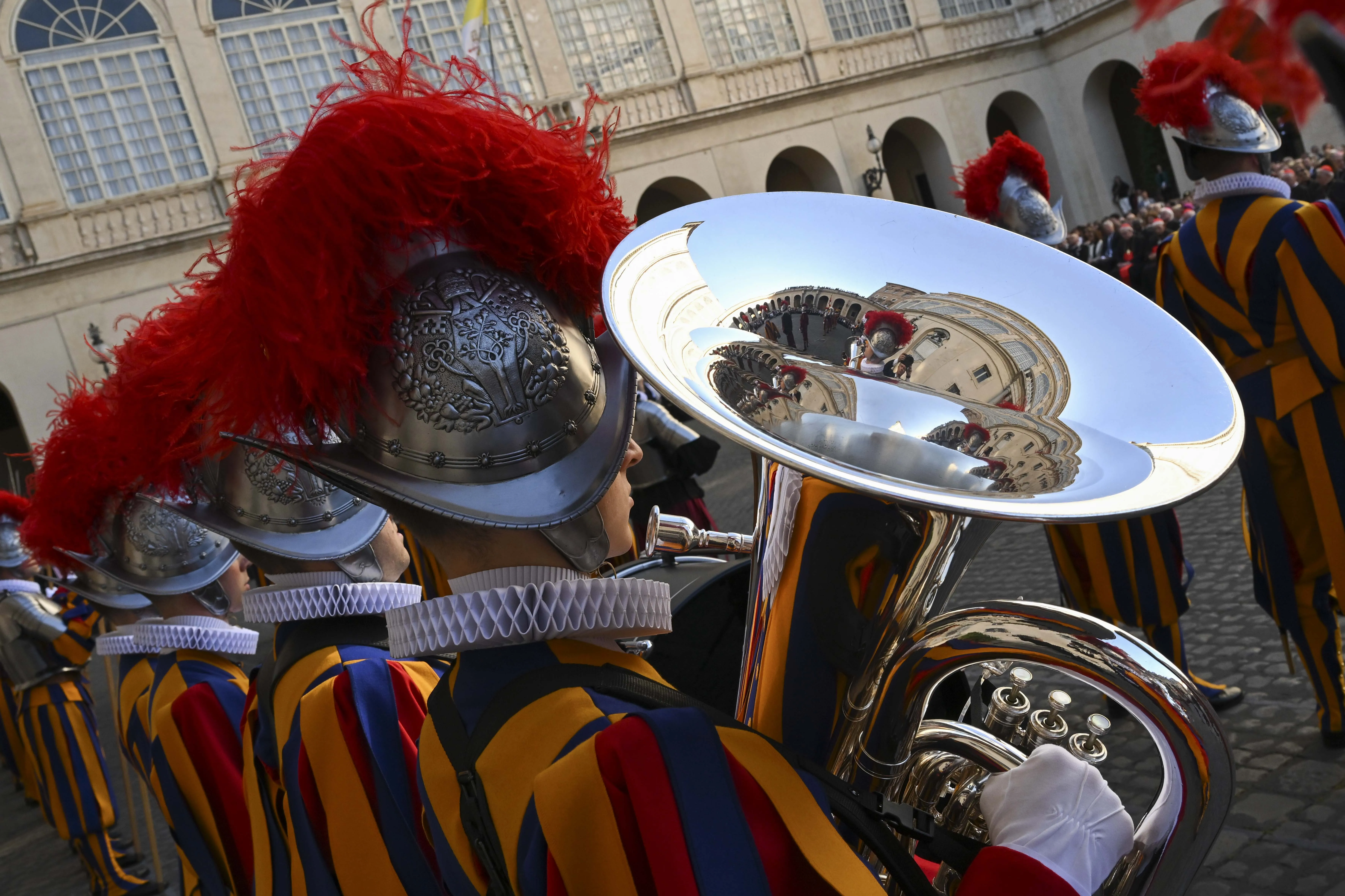
The patron saint of the Pontifical Swiss Guard is Saint Nicholas of Flüe, also the patron of Switzerland.
He was a Swiss hermit and ascetic who lived in the 15th-century.
As a young man, he was a distinguished soldier, and fought in the Old Zürich War and Thurgau war. Tradition says he fought with a sword in one hand and a rosary in the other.
He served in the military from the age of 21 to 37, even becoming a captain.
After leaving the army, Nicholas served as a councilor and judge for his canton.
Eventually he decided to leave behind a political life and devote himself to contemplation after receiving a mystical vision. In 1467, he left his wife and ten children with his wife’s consent to join a brotherhood.
Nicholas received many spiritual insights through visions, and died in 1487 surrounded by his family.
Entry requirements
To enter the Swiss Guard, a candidate must be a single Catholic male of Swiss nationality between the ages of 19 and 30 who is at least 5 feet, 8 inches tall.
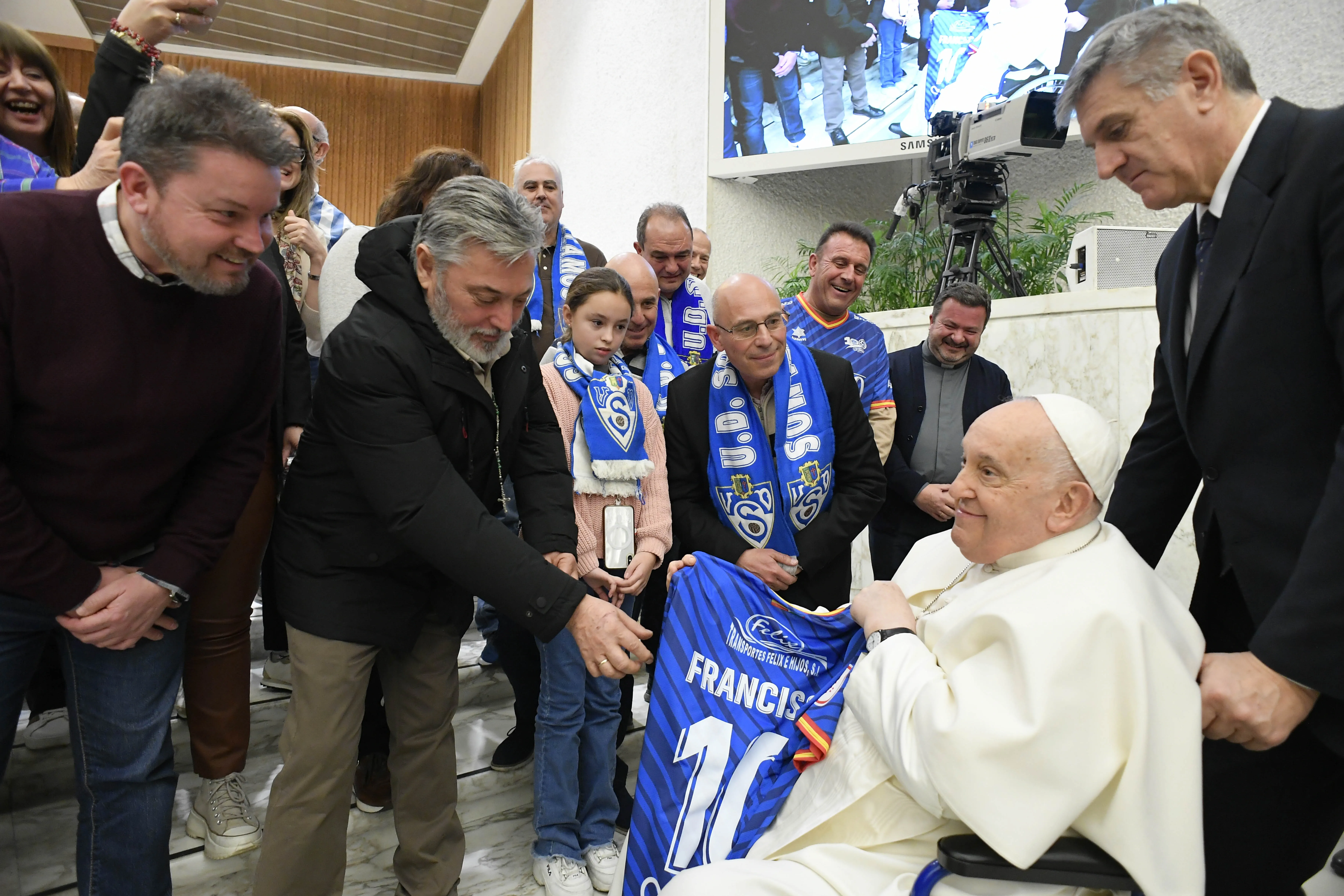
Guards are allowed to marry while in service, and some of the guards live in family housing with their wife and children.
As the needs of the Vatican’s security have increased over the years, so have the number of guards. While in 2006 there were 100 men in what is the world’s smallest but oldest standing army, the number has been increased to 135.
The Pontifical Swiss Guard, established by Pope Julius II in 1506, is responsible for Vatican security together with the Vatican gendarmes.
